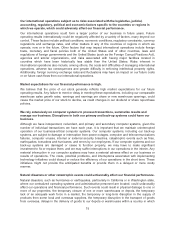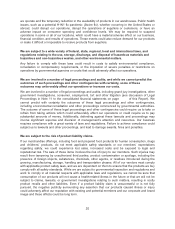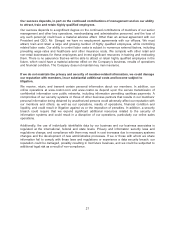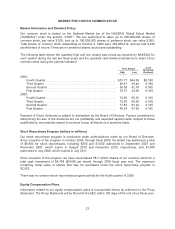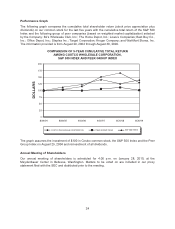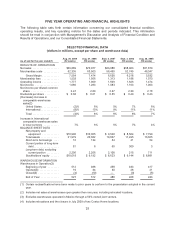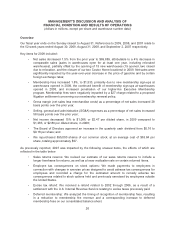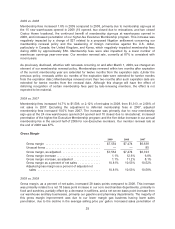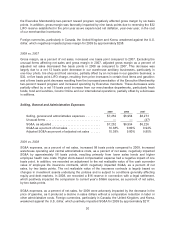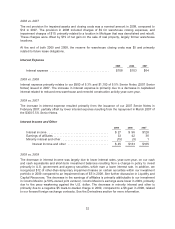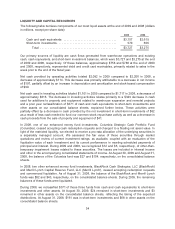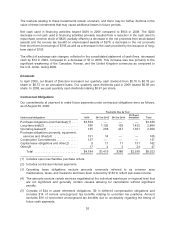Costco 2009 Annual Report Download - page 31
Download and view the complete annual report
Please find page 31 of the 2009 Costco annual report below. You can navigate through the pages in the report by either clicking on the pages listed below, or by using the keyword search tool below to find specific information within the annual report.
2009 vs. 2008
Membership fees increased 1.8% in 2009 compared to 2008, primarily due to membership sign-ups at
the 15 new warehouses opened in 2009 (19 opened, two closed due to relocations, and two closed
Costco Home locations), the continued benefit of membership sign-ups at warehouses opened in
2008, and increased penetration of our higher-fee Executive Membership program. This increase was
negatively impacted by a charge of $27 related to a proposed litigation settlement concerning our
membership renewal policy and the weakening of foreign currencies against the U.S. dollar,
particularly in Canada, the United Kingdom, and Korea, which negatively impacted membership fees
during 2009 by approximately $50. Membership fees were also impacted by a lower number of
warehouse openings year-over-year. Our member renewal rate, currently at 87% is consistent with
recent years.
As previously disclosed, effective with renewals occurring on and after March 1, 2009, we changed an
element of our membership renewal policy. Memberships renewed within two months after expiration
of the current membership year are extended for twelve months from the expiration date. (Under the
previous policy, renewals within six months of the expiration date were extended for twelve months
from the expiration date.) Memberships renewed more than two months after such expiration date are
extended for twelve months from the renewal date. Although this change will have the effect of
deferring recognition of certain membership fees paid by late-renewing members, the effect is not
expected to be material.
2008 vs. 2007
Membership fees increased 14.7% to $1,506, or 2.12% of net sales in 2008, from $1,313, or 2.08% of
net sales in 2007. Excluding the adjustment to deferred membership fees in 2007, adjusted
membership fees increased 10.0% from 2007. The increase was primarily due to: new membership
sign-ups at the 24 new warehouses opened (34 opened and 10 closed due to relocations); increased
penetration of the higher-fee Executive Membership program; and the five dollar increase in our annual
membership fee in the second half of 2006 for non-Executive members. Our member renewal rate at
the end of 2008 was 87%.
Gross Margin
2009 2008 2007
Gross margin ................................... $7,554 $7,474 $6,638
Unusual items ................................... — — 85
Gross margin, as adjusted ......................... $7,554 $7,474 $6,723
Gross margin increase ............................ 1.1% 12.6% 6.8%
Gross margin increase, as adjusted ................. 1.1% 11.2% 8.1%
Gross margin as a percent of net sales .............. 10.81% 10.53% 10.52%
Adjusted gross margin as a percent of adjusted net
sales ........................................ 10.81% 10.53% 10.58%
2009 vs. 2008
Gross margin, as a percent of net sales, increased 28 basis points compared to 2008. This increase
was primarily related to a net 18 basis point increase in our core merchandise departments, primarily in
food and sundries, partially offset by a decrease in softlines, and a net seven basis point increase from
our warehouse ancillary businesses, primarily our gasoline and pharmacy departments. The majority of
this gross margin improvement was due to our lower margin gas business having lower sales
penetration, due to the decline in the average selling price per gallon. Increased sales penetration of
29


